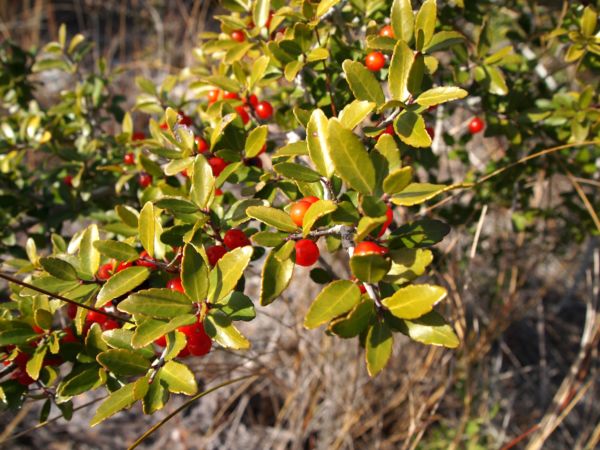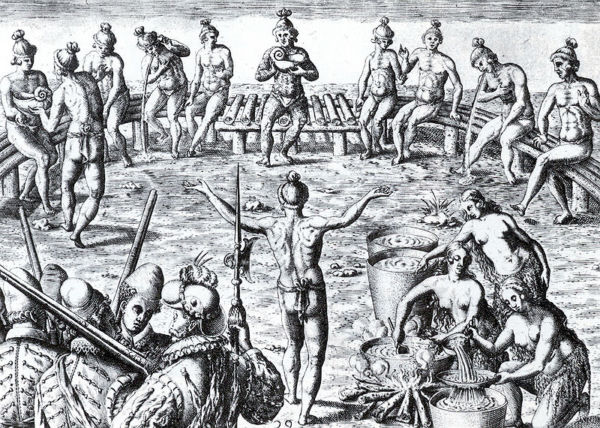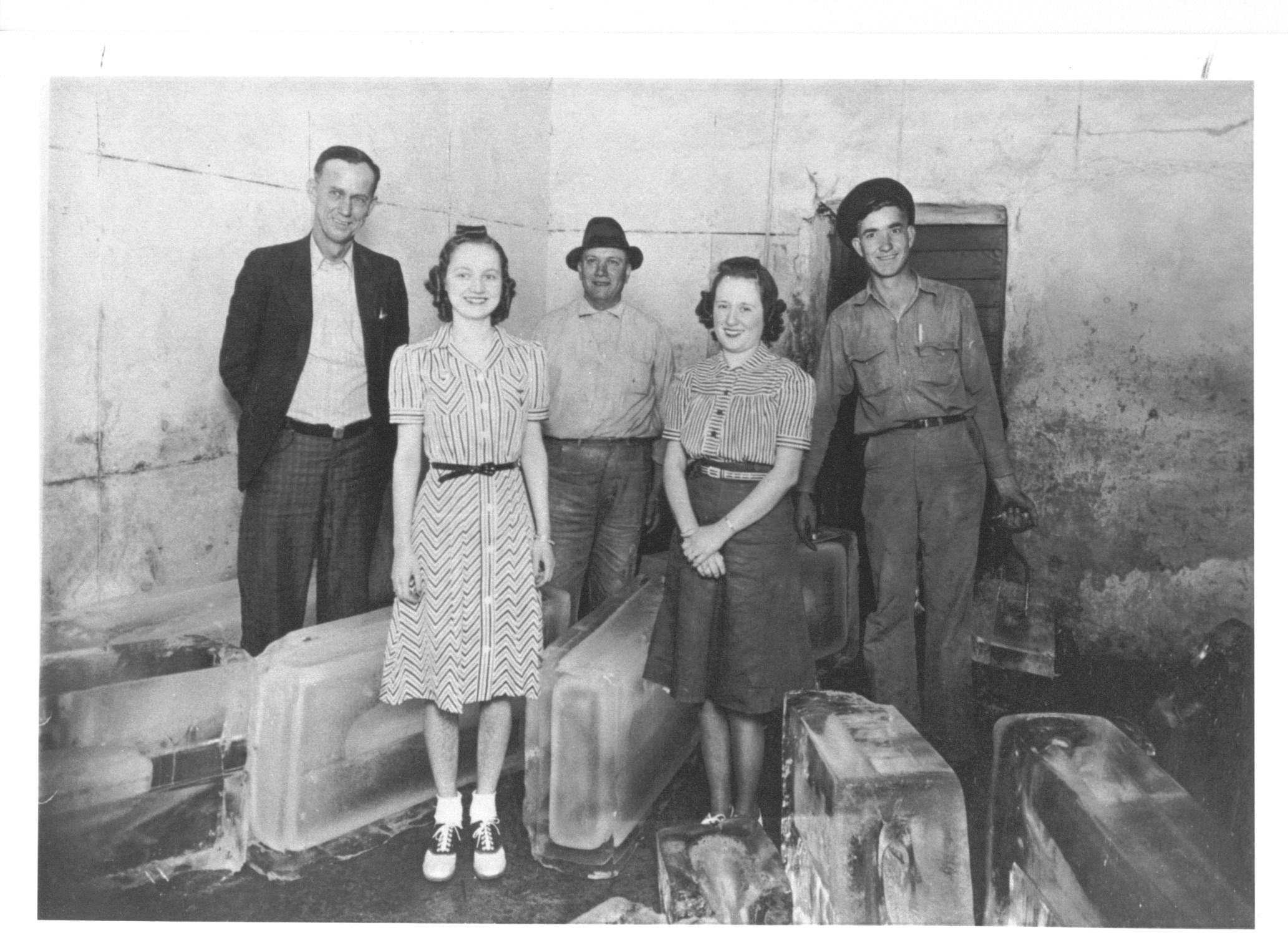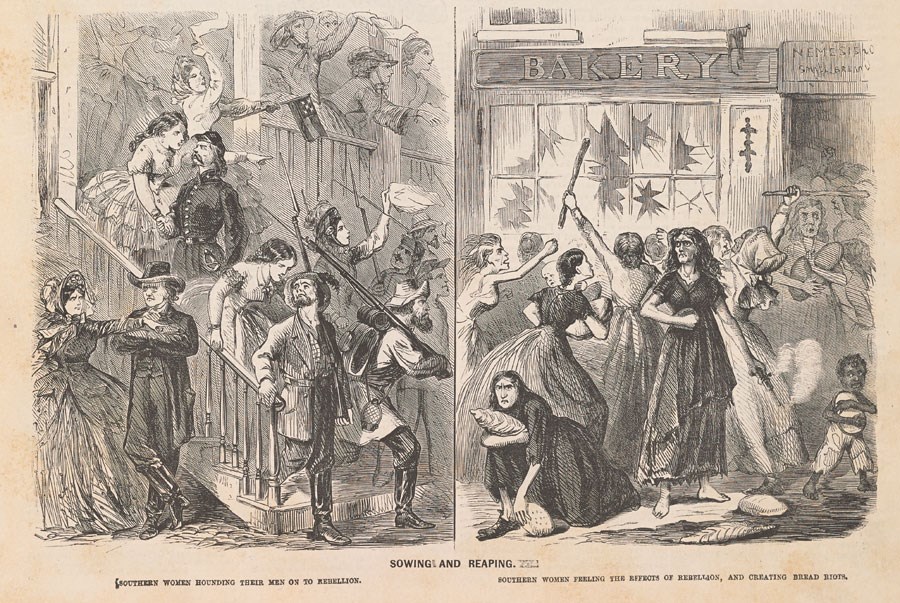
image shows the berries and foliage of the Yaupon holly
While neither coffee—brewed from the seeds of shrubs in the genus Coffea—or tea—brewed from the leaves of the Camellia sinensis—are native to North America, the indigenous people got their caffeine from a drink known as the “Black Drink.” Made from the brewed leaves of the Yaupon holly (Ilex vomitoria), this drink had a number of uses among the people of the Southeast including the Muscogee Creek people who occupied this area. Charles Hudson, an expert on these indigenous people noted that it was used for three primary purposes: One, it would be drunk as a social drink, much in the way we drink coffee and tea today. Two, it was considered a form of medicine that could improve mental or physical health. And three, that—as its scientific name implies—it could be used as an emetic to produce vomiting for ritual purification.
When Europeans began to interact with indigenous people, they were introduced to this drink, also sometimes known as “cassina,” which may be an anglicized version of its name from the language of the Timucuans. While settlers enjoyed this dark concoction, and it was also taken back to Europe, coffee and tea eventually won out. In certain parts of the Southeast, cassina was still made and consumed up through the Civil War. At that time, it was used as a replacement for coffee or tea, which were relatively scarce. A similar drink, made from a related species of holly, continues to be consumed today in South America, where it is known as “maté.”

The engraving shows a Europeanized view of Timucuans (one of the native people of Florida) consuming black drink during a tribal council. The engraving is by Jacques le Moyne from the 16th century




